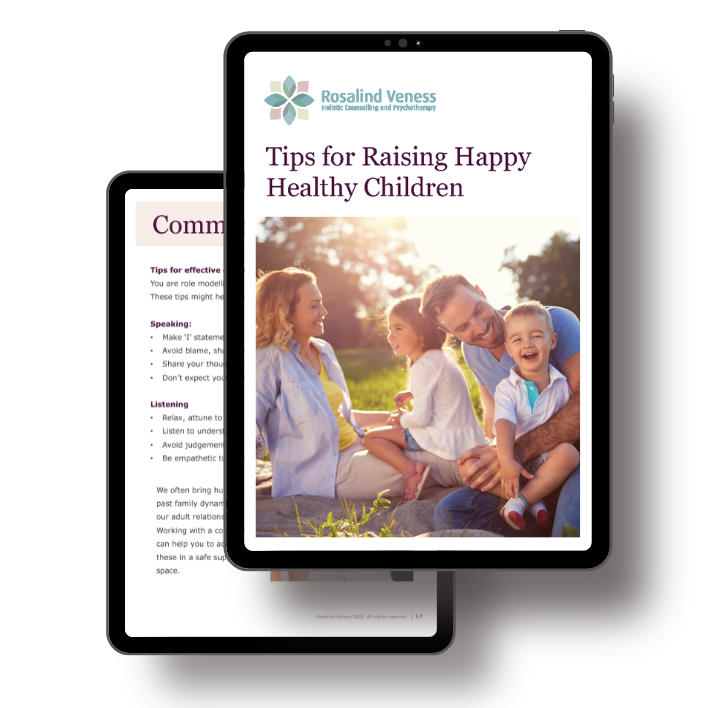
Have you ever wondered what it is that draws people together, and what it is that pulls you apart in relationships? Perhaps the answer lies in your attachment style.
Our attachment styles develop during childhood, possibly even before birth. They describe a child’s relationship with their parents, later becoming unconscious patterns of behaviour in adult life.
Attachment Styles
Attachment styles fall into two main categories of Secure and Insecure Attachment.
-
Secure Attachment
A securely attached child feels safe to explore their world. They grow up learning to believe in themselves, secure in the knowledge that a caregiver will be available when needed.
In an adult relationship, this person generally has good self esteem. Feeling confident in their relationships, they instinctively know how to be honest, intimate and supportive. They will likely be a good listener, and feeling comfortable with setting healthy boundaries and expressing their own needs.
-
Insecure Attachment Styles
Insecure attachment styles develop in early childhood as an organised survival strategy. Three recognised styles are
- Anxious (Preoccupied, Ambivalent)
- Avoidant (Dismissing) and
- Disorganised (Fearful, Disoriented)
Anxious/Preoccupied Attachment
Your partner with an anxious style of attachment may have grown up feeling their carers were not consistently available. Feeling anxious and insecure, they could have a tendency to rely on others for security and emotional regulation, and may feel uncomfortable in social situations..
Your anxious partner will likely worry about the relationship, constantly thinking “am I doing enough”. Finding it hard to be in the moment, they may often try to live in the “high dream” of a relationship, believing in the fairytale romance, and the future potential, without really being consciously aware of what is actually happening.
As an adult, they may appear insecure, or clingy, constantly needing validation. Emotionally hungry, they could become overly dependent on their partner, losing a sense of their own identity. Their fears of being alone can become self-fulfilling, as they accidentally push their partner away, by trying too hard to keep them close.
Avoidant/Dismissive Attachment
A person with an avoidant attachment style tends to feel uncomfortable with close relationships. They may try to keep their partner at a distance, to avoid feeling stifled, or “suffocated”.
In childhood, their carers were able to meet their basic needs, but may have felt uncomfortable with expressing their emotions. As adults, they might struggle to understanding and accept their deeper feelings in a relationship.
Feeling insecure, they might choose to leave a relationship, rather than face the fear of being rejected. Their “high dream” in a relationship may be to value independence and self-sufficiency, as they struggle with emotional closeness and vulnerability.
Disorganised Attachment
In a disorganised attachment, the caregiver is unable to provide safety and security to the child. Feeling insecure, the child may see the carer as either frightened or frightening, and shutdown their emotions. Fearful of getting too close to someone, they may feel both avoidant and anxious in an adult relationship.
Possible Adult Attachment Scenario
Please note, this is a composite of several experiences, and is not intended to represent anyone individually.
Jane and Bob had been in a relationship for several years, and both felt the relationship was struggling. Being in love just didn’t seem to be enough.
Bob started to feel uncomfortable with Jane’s apparent need to always be close. He felt suffocated, and started to distance himself emotionally. Meanwhile, Jane, sensing his discomfort, tried to remedy the situation by getting closer. As Bob continued to deny to himself the importance of the relationship, Jane felt rejected and unwanted.
Does this sound familiar?
Jane’s early attachment style had an anxious pattern. She had always been attracted to the strong, independent types, and Bob fitted the bill perfectly. Bob’s attachment style was more avoidant, and he struggled with too much closeness. He felt he needed more space in the relationship.
The characteristics that they had initially found attractive in each other were now tearing them apart. Bob and Jane’s childhood experiences meant they had very different ways of experiencing their emotional needs in a relationship.
Bob found Jane’s tears and heightened emotions difficult to be with, and was unaware of her need for security in the relationship. Jane couldn’t understand why Bob found her apparent vulnerability exhausting, and struggled to understand what she felt was his rejection of her.
Couples Counselling sessions helped them to communicate their needs, bringing more awareness and understanding to the relationship. Once they realised how their early attachment patterns were affecting their relationship, Bob and Jane found they were able to connect with each other at a much deeper level.
We are Social Beings
We are social beings, and exist primarily through relationships. The attachment patterns we learn during infancy and early childhood set the scene for later adult relationships. As a result we may unconsciously keep repeating them.
Fortunately, it is never too late to change. An added bonus is that you will likely find yourself growing in confidence and self-esteem along the way.
Reaching Out
If you feel you are struggling in your relationship, or have noticed a pattern repeating itself, it’s OK to reach out and ask for help.
Your counsellor will help you to “change the pattern”, helping you to grow in awareness and understanding. You will be supported to safely explore patterns in your relationships. The result can be the freedom to move ahead into new and more satisfying ways of relating to others.
As an added bonus, you may notice positive changes in your children too as you become closer as a couple.
It is never too late to change.
Download our FREE e-book Tips for Raising Happy, Healthy Children
Related Articles
- Time out for Parents
- Parenting Support
- Couples Counselling





